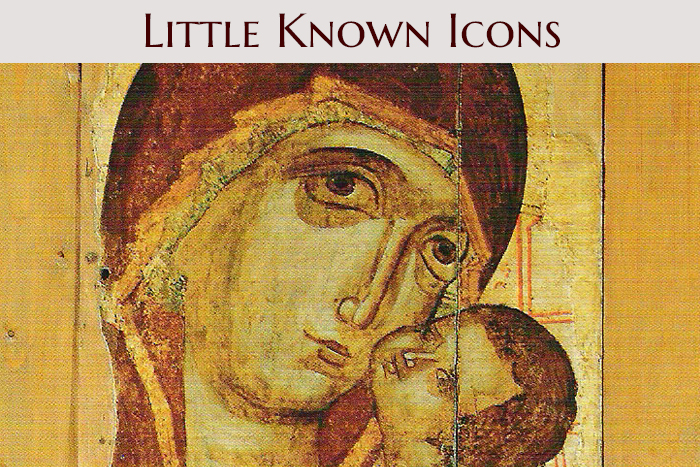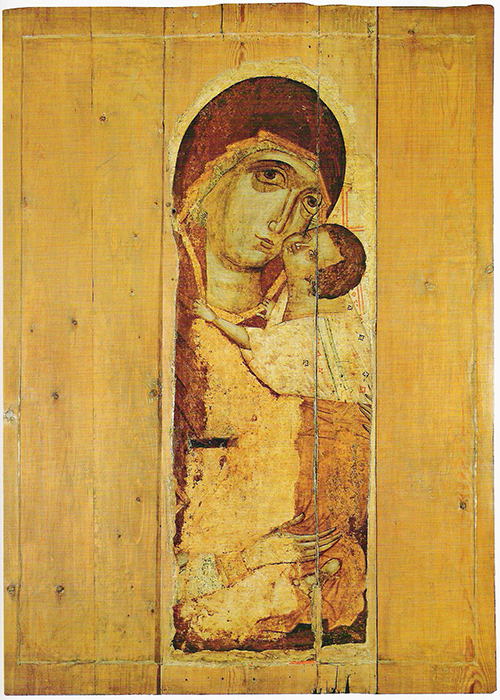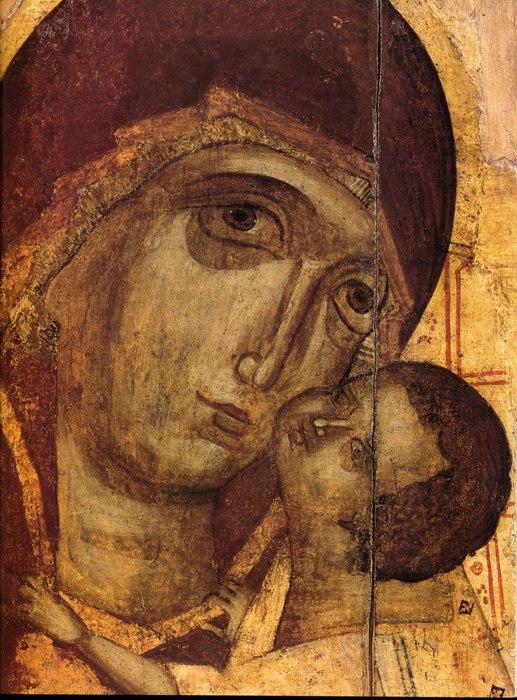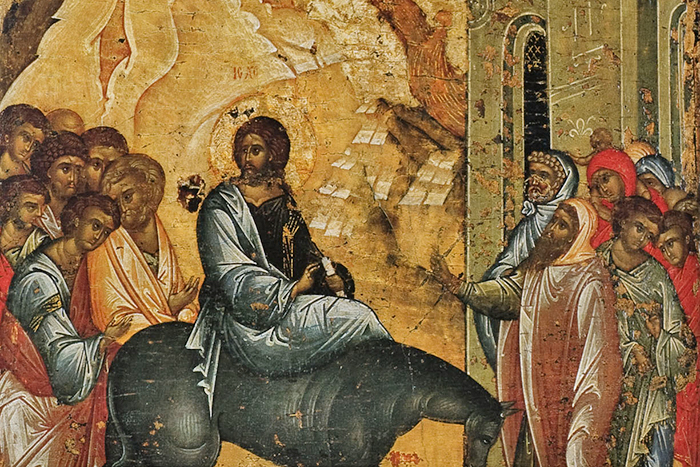
It was the first time I’d seen such a big icon, almost as tall as a person. It has survived since the 13th century, thank God. The images of the Mother of God and the Baby Jesus seem to appear in the center of the board. Because of the lost edges, there is no sense of limits, it seems that the painting continues in both directions. That it is as boundless as the fields and absorbs all the deserted white spaces and abandoned people in the villages near Lake Kubenskoye. You walk through a field in the wind, in the wild, all alone, your hands are stiff, the frost penetrates your bones, and you keep thinking that She is near. She warms you up in this vast desert in the frost and in the snow… Compassion and understanding. These are rare sentiments now. She’s compassionate, which means encouragement and comfort. She comforts you only by looking at you…
This is what Olga Tolstikova, a Moscow artist, wrote about her impression of the Podkubenskaya (Tolgskaya) icon of the Mother of God.

The large Podkubenskaya icon of the Mother of God (147×101 cm) belongs to the first third of the 14th century. It is a rectangular board with a kovcheg. It was found during the restoration in 1929-1974 that the original ancient painting was preserved only in the central part of the icon, while the golden background, patterned halos and rizas were painted in the 16th century, that is why at present the original painting is free from later layers.
This icon depicts the half-length image of the Mother of God: Her head is inclined towards the Baby Jesus, whom She holds at her left shoulder. Christ “tilts his head strongly, touching Mary’s face with his cheek, and clings to the edge of her mantle with both hands. The Mother of God supports the baby with her right arm from below, and her left arm gently props the baby’s back. The baby’s right leg is turned up and its bare foot is visible in the folds of the himation. Both the Mother of God and the baby wear traditional clothes, except for the bright shirt of Christ, decorated with numerous loosely scattered small geometric figures (rhombuses, dots, etc.).”

A number of features, in particular, the painting fluency, the use of translucent paints, the lack of gold in the palette, the generalization of large shapes, the combination of lime and pine wood in the base, indicate that the icon was created locally, in the North. Although icon painters from Rostov and Novgorod came to the North in those years, this particular icon was most likely painted by one of the local artists.
The origin of the Podkubenskaya icon is associated with Dionysius Glushitsky. It was believed until the 1930s that it was him who had painted the icon. Saint Dionysius lived and worked in these northern regions. He founded several monasteries including one, the most famous one, on the Glushitsa River, hence his sobriquet. After eight years of monastic life Dionysius discovered the talent of an icon painter — he himself painted icons for the monasteries. However, later research of the Podkubenskaya icon proves that it was painted a little earlier than the saint began his work in icon painting.
The Podkubenskaya icon of the Mother of God was famed as a wonder-working icon in the mid-19th century. At that time, at the request of a peasant woman, Paraskeva Dmitrieva, who had been healed from seizures thanks to prayers in front of this image, the icon was taken out of the barn, where it had been placed due to its awkward size and timeworn appearance, and placed in the Resurrection Church near the village of Kubenskoye, Vologda Province (Russian North), hence its name: Podkubenskaya. The Resurrection Church was a traveling chapel of Tsar Ivan IV the Terrible, who would pass the church on his pilgrimages to the St. Cyril Belozersky Monastery.
The fame of the new wonder-working icon spread very quickly. Believers began to come to it. Many, especially “klikushi”, i. e., people who suffered from hysterical seizures, received healing from it. The icon was also called Tolgskaya, as it was indeed a variant of the Tenderness icon, which in Russia was called Tolgskaya (the apparition of that icon was associated with the foundation of the Tolgsky Monastery near Yaroslavl in the 14th century). However, they are different, primarily because of the gesture of the right hand and the position of the Baby’s legs on the Podkubenskaya icon.
The Podkubenskaya icon of the Most Holy Mother of God is a masterpiece of medieval painting. The icon is a combination of colors and shades, effortless painting, proportionality and consistency of shapes which have nothing superfluous, and is characterized by a certain naivety. As for the profoundness of the image, it is rightfully compared with the Savior from Zvenigorod Chin. The icon is now stored in the Vologda History Museum.


